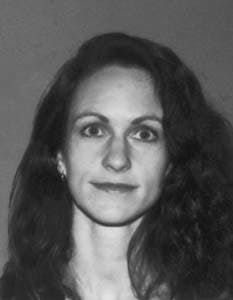Carol A. Gothenquist
Calgon Carbon Corp.
Richmond, Calif.Karen M. Rooker
Chevron U.S.A. Products Co.
Richmond, Calif.
Traditionally, refiners have used carbon systems to treat amine solutions to prevent problems such as foaming and chemical or thermal degradation. Foaming and contaminants lead to increased amine makeup and high operating costs.
With increased focus on safety, however, refineries are carbon treating their amine solutions for a different reason-incident prevention.
Chevron U.S.A. Products Co. installed a carbon adsorption system to protect an LPG storage sphere at its refinery in Richmond, Calif. Vessel damage can result when amine contamination leads to emulsion formation and consequent amine carryover, thus promoting wet-H2S cracking.
Process
In Chevron's No. 5 H2S recovery plant, a mixture of butane and propane containing H2S is contacted with diethanolamine (DEA) in a liquid-liquid absorber. The absorber is a countercurrent contactor with three packed beds.
The gas enters the bottom of the contactor and flow up the column, while the lean DEA enters the top of the contactor and flows down the column.
After contacting, the rich DEA is routed from the bottom of the contactor to a rich-DEA flash drum, where hydrocarbons are removed. The stream then flows to a DEA regenerator.
The sweet gas flows from the top of the contactor to an overhead receiver. In the receiver, any entrained DEA is separated from the sweet gas and routed to the rich-DEA flash drum.
The gas flows to an LPG sphere for storage. Chevron uses some of the sweetened gas as refinery fuel and sells the rest as LPG.
Problem
Because the sweetening system did not include a carbon adsorption unit for amine purification, contaminants were building up in the DEA. The contaminants comprised: treatment chemicals, hydrocarbons, foam inhibitors, and amine degradation products.
These contaminants cause a DEA-hydrocarbon emulsion to form in the liquid-liquid contactor. Large quantities of DEA are carried over into the overhead receiver in this emulsion.
The receiver has a high-level alarm set at 80% of its volume. When the alarm is triggered, an operator must manually dump the DEA carryover using a blowdown valve.
Because the quantity of DEA carryover was consistently excessive, as soon as the received was dumped, it filled up again. Thus intervention was necessary almost constantly.
In addition to this problem, the materials of construction in the LPG storage sphere are sensitive to contaminants. In the past, when water and DEA were introduced into the sphere, damage resulting from wet-H2S cracking cost the refinery about $750,000 to repair
Solution
Chevron installed a skid-mounted, dual vessel, carbon adsorption system in the No. 5 H2S plant on a temporary basis. The unit, a Calgon Carbon Corp. Model 7.5, contains two adsorbers, each designed to contain 10,000 lb reactivated carbon.
Fig. 1 [25901 bytes] is a flow diagram of the sweetening system, with carbon adsorbers.
Cartridge filters upstream and downstream of the adsorbers remove particulates from the incoming DEA stream and retain any carbon fines emitted from the adsorbers.
The adsorption system is run in series operation. When the carbon is spent, it is transferred as a slurry to a trailer, in which it is shipped to a Calgon reactivation facility. The DEA color is monitored to determine when carbon reactivation is required.
Chevron's system treats a 10% slipstream of the No. 5 plant's DEA at a flow rate of about 100 gpm. The unit operates at 50 psi and 130° F.
The system was brought on-line in April 1995. Fig. 2 [29885 bytes] shows carryover levels before and after startup.
As shown in the figure, the carbon adsorption system eliminated emulsion formation and carryover problems almost immediately. The system has run smoothly since startup, and significant storage sphere damage has been avoided.
The Authors
Carol A. Gothenquist is a refinery sales engineer for Calgon Carbon Corp., Richmond, Calif., where she manages, troubleshoots, and monitors carbon systems in refinery applications. She has a BS in chemical engineering from the University of Washington.
Karen M. Rooker is a process engineer for Chevron U.S.A. Products Co. at the Richmond, Calif., refinery. She has a BS in chemical engineering from California State Polytechnic University, Pomona, Calif.
Copyright 1996 Oil & Gas Journal. All Rights Reserved.


